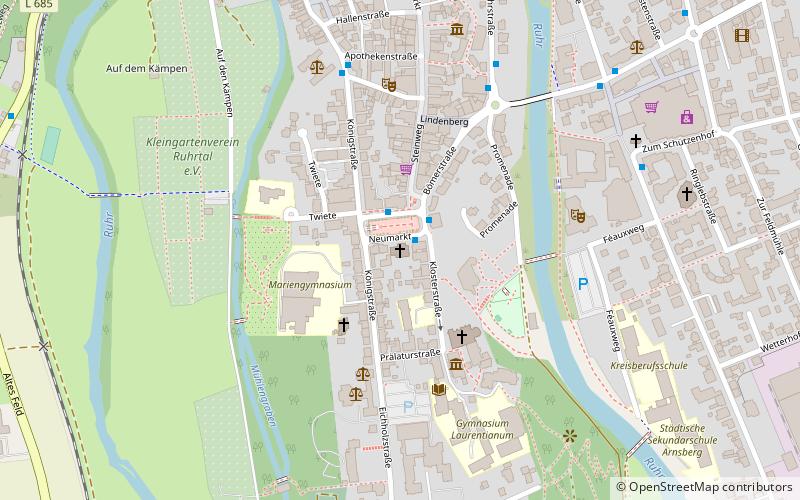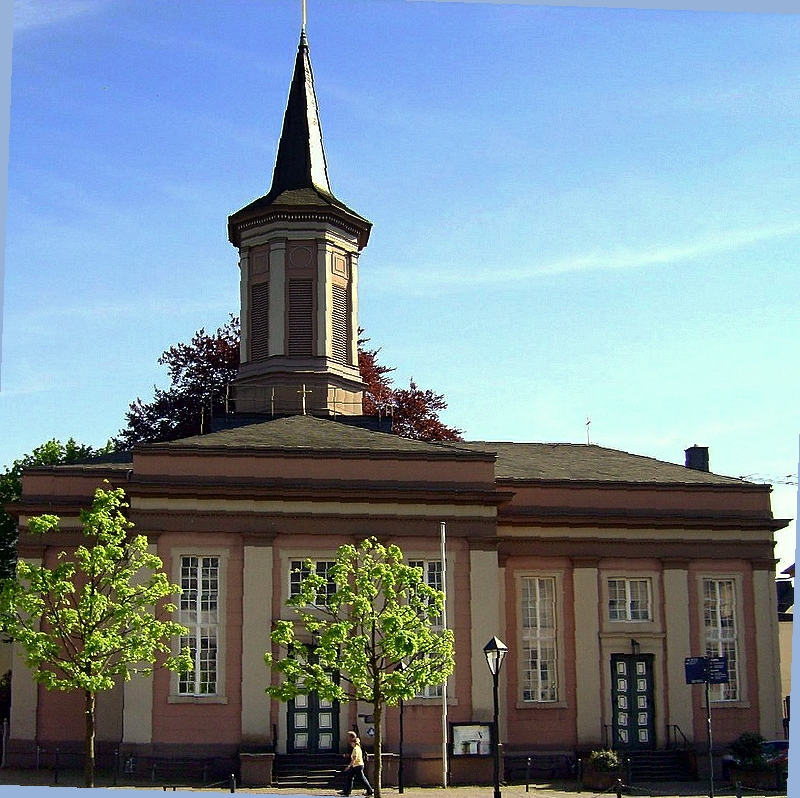Church of the Resurrection, Arnsberg


Facts and practical information
The Church of the Resurrection in Arnsberg, built between 1822 and 1824, was the first Protestant church building in the city.
As a result of the Counter-Reformation in the Duchy of Westphalia, there was no Protestant parish in Arnsberg until the end of the Holy Roman Empire. This changed with the transfer of the duchy to Hesse-Darmstadt in 1803, which brought numerous Protestant officials and their families to the town. In addition, the town was the location of a garrison of Hessian troops. At first, Protestants and Catholics used the St. George's Chapel in Arnsberg's old town alternately. After the transfer of the region to Prussia in 1816 and the further growth of the Protestant population, the need for a separate place of worship became more urgent. The project was driven forward in particular by pastor Ferdinand Hasenclever.
The history of planning and decision-making was complicated. Plans to convert the used chapel exclusively for the Protestant congregation also failed due to the resistance of Karl Friedrich Schinkel. A new church building also made sense in view of the concentration of new residents in the new "classicist quarter" around Neumarkt. Since the plans for a neo-Gothic church, as proposed by Schinkel, did not fit into the overall layout of the square, a central neoclassical building in the form of an isosceles Greek cross was finally erected - also promoted by Friedrich Wilhelm III. A tower with a surrounding gallery rises above the central building.
Inside the building, a central space is surrounded by eight Doric columns. In the eastern part of the church is the altar and behind it an altarpiece by the painter Ernst Deger from 1830 in the style of the Nazarene school with the risen Christ. Both the baptismal table on the north side - based on an ancient sacrificial bowl - and the pulpit are adapted to the classicist style.
Later, an organ loft was added on the west side. After the church proved too small due to the growth of the congregation, the building was extended to the west in 1890/91. In the 1950s, the interior color scheme was redone according to classicist models. In the last decades the interior underwent further changes. Some of the pews were removed and replaced with chairs, allowing for multifunctional use. In response to the shrinking of the congregation, part of the 1890 annex was detached and now serves for congregational work.
The organ with 24 stops on two manuals and pedal was built in 1969 by the company Emil Hammer Orgelbau. The disposition is based on the style of Arp Schnitger.
The tower houses three bronze bells, which ring in the tone sequence gis′ - h′ - dis″ and ring on low-cranked yokes. Two bells were made in 1946 by Albert Junker in Brilon.
One scene of the ARD film Letzte Ausfahrt Sauerland by Nikolai Müllerschön, which was first broadcast on May 15, 2015, was filmed in this church.
Church of the Resurrection – popular in the area (distance from the attraction)
Nearby attractions include: Brennpunkt - Feuerwehrmuseum der Generationen, Arnsberger Schloßruine, Rüdenburg, Stadtkapelle St. Georg.
Frequently Asked Questions (FAQ)
Which popular attractions are close to Church of the Resurrection?
How to get to Church of the Resurrection by public transport?
Bus
- Neumarkt • Lines: 548, C10, C3, N3, N5, R22, R71, S10 (1 min walk)
- Verwaltungsgericht • Lines: C10, R22, S10 (5 min walk)
Train
- Arnsberg (21 min walk)











